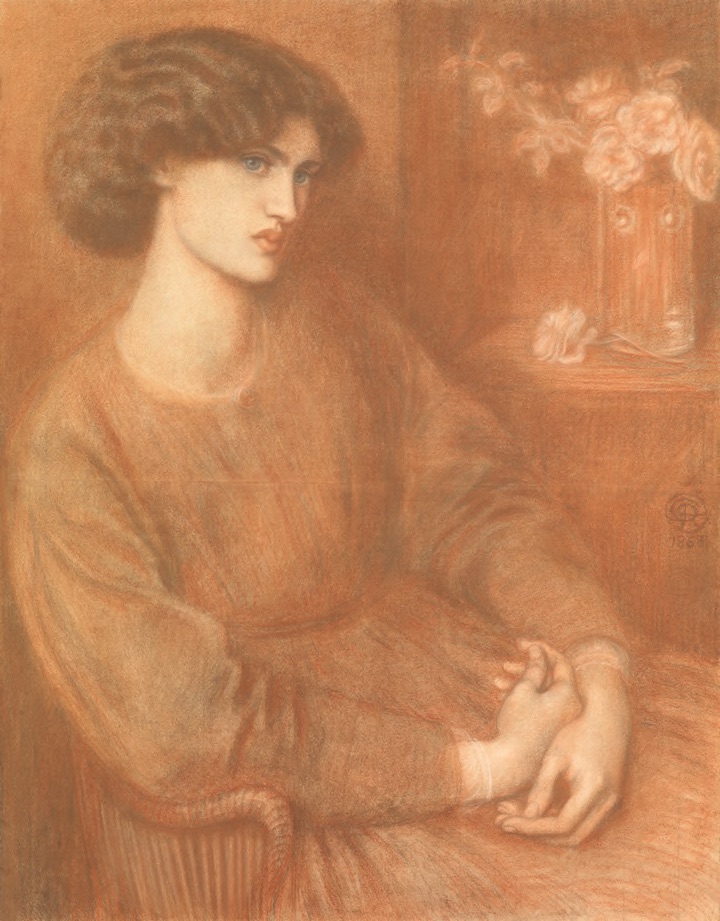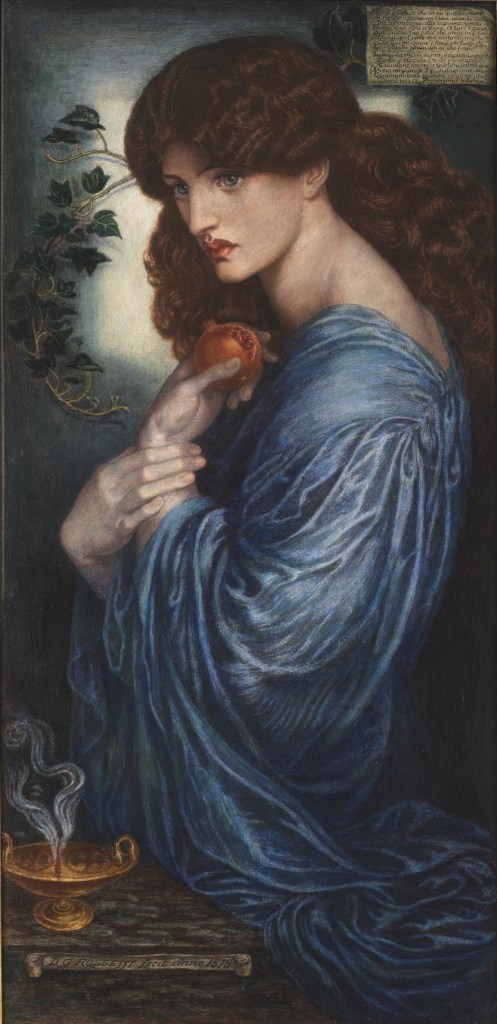In July 2013 at Christie’s London, a handful of collectors competed for a Pre-Raphaelite watercolour. Six international bidders raised the price above its £5 million top estimate to a startling £14.8m. Love among the Ruins, painted between 1870 and 1873 by Edward Coley Burne-Jones, represents the high-water mark of the Pre-Raphaelite style, with its detailed vegetation, archaising scene setting and blue-robed Romantic lovers with their Botticellian faces. Produced before the full emergence of the Aesthetic Movement, it expresses with unimpeachable Victorian propriety the powerful and thwarted love of the married Burne-Jones for his Greek muse, Maria Zambaco. It also broke three auction records, including the highest price achieved for Burne-Jones and for a Pre-Raphaelite work in any medium, as well as for a British work on paper. ‘That is what a masterpiece does in the auction room,’ says Harriet Drummond, Christie’s head of British art on paper. ‘Collectors are inclined to step up.’

Love among the Ruins (1870–73), Edward Coley Burne-Jones. Christie’s London, £14.8m
There were other factors working in the painting’s favour – including the fact that it had not appeared on the market for over 50 years. Then it had sold at Sotheby’s – when Victorian pictures were deeply unfashionable – for 480 guineas, less than a third of its 1908 auction price of £1,650. But for Drummond this sale also demonstrates that just as the Pre-Raphaelites held preparatory drawings in high esteem, so today ‘people recognise the qualities of these drawings. They do hold their own in general collections, alongside a Gainsborough, for instance.’ The interest in the saleroom reflects the fact that while there are still key collectors in the UK, including Sir Andrew Lloyd Webber and Isabel Goldsmith, interest in these artists and their much-reproduced images is global. ‘These are beautiful, very accessible images,’ Drummond says.
Burne-Jones, as it happens, was never a member of the Pre-Raphaelite Brotherhood, founded in 1848 by the painters Dante Gabriel Rossetti, John Everett Millais and William Holman Hunt. This band of what became seven, including painter James Collinson and sculptor Thomas Woolner, vowed, in the words of Rossetti’s brother, the writer William Michael, ‘to study Nature attentively’ and to avoid mannerisms introduced by Raphael and exemplified most perniciously in the paintings of Joshua Reynolds. The group had split by 1853 and only ‘a handful of paintings’ made in the five-year period between 1848 and 1853 are inscribed ‘PRB’, according to Rupert Maas of the Maas Gallery in London. Of these, ‘only some are by Rossetti, Millais or Holman Hunt [the three best known], and most of them are religious themes’. Almost all are in museums.
But the impact of these young artists on their contemporaries, with their intense spirituality and the vivid, even scandalous realism of their paintings, was decisive, drawing into their sphere figures such as Charles Allston Collins, John Brett, Philip Calderon, Arthur Hughes, Frederick Sandys and Burne-Jones, and influencing generations after. The difficulty, as Maas remarks wryly, is how to put a limit on ‘the much broader American definition’ of ‘any colourful, detailed Romantic painting of medieval or earlier (even neoclassical) subjects painted in the hundred years 1850–1950, not necessarily British’. The market, however, is strictly polarised between a handful of names at the top (Maas says Rossetti, Burne-Jones and, if our definition stretches that far, Frederic, Lord Leighton) and the rest. He has available Rossetti’s large chalk drawing of 1868 of the Pre-Raphaelite beauty Jane Morris (£2.5m), and a delicate pencil study of the alluring Mary Cassavetti (Mrs Mary Zambaco) from 1871 (£240,000).

Jane Morris (1868), Dante Gabriel Rossetti. The Maas Gallery, £2.5m
Since the 1980s there has been a steady, growing interest in Pre-Raphaelite works from a small number of collectors who, according to London dealer Peter Nahum at the Leicester Galleries, ‘have mopped up a good deal of the market’. Mostly based in the UK or North America, where public museums are full of Pre-Raphaelite paintings, they were joined in the 2000s by Russians pursuing what Nahum calls, ‘bling pictures’, particularly of a muse or a mistress, such as the startling Millais portrait of Sophie Gray (1857), the sister of his wife Effie, which Nahum sold. As Maas comments: ‘There is enduring interest in the life stories of the Pre-Raphaelites and their loves,’ encouraged by books and films. In the last 15 years there have also been significant international exhibitions and at Tate, the Royal Academy and Leighton House, presenting the radical originality of the Pre-Raphaelites. Next year [in October 2018] a major Burne-Jones retrospective opens at Tate Britain, featuring works in a wide range of materials, including stained glass and tapestry.
The upswing in interest is reflected in the numbers of records broken at the top end. In the same sale as Love among the Ruins, Millais’ charming portrait Sisters (1868), which sold for just £4,410 at Christie’s in 1971, made £2.3m. Later that year in December Sotheby’s London sold Rossetti’s luscious painting A Christmas Carol (1867), with, as his studio assistant Henry Treffry Dunn described, its ‘maiden in resplendent eastern dress of crimson with a gold thread pattern worked throughout’, for £4.56m – a record for Rossetti. A month earlier at Sotheby’s London, the allegorical chalk drawing Proserpine of 1880, again of Jane Morris, with Rossetti’s own sonnet on the reverse, fetched £3.27m. The drawing had been in a private collection since 1971.
Simon Toll, Sotheby’s head of British and Irish art post-1850, comments that today ‘it is much more acceptable to say you like the Pre-Raphaelites’. He adds that Japanese interest, strong in the 1980s, has also revived. Sotheby’s failed, however, to sell the ambitiously estimated large oil painting, Pandora (1871), among the first of Rossetti’s paintings of Morris, put up for sale in London in May 2014 (estimate £5m–£7m), although it sold privately soon afterwards, for ‘an amount not far from the low estimate’. Toll points to the success, by contrast, of Lord Leighton’s tender chalk and pencil study for his famous painting Flaming June, which sold for £167,000, nearly three times the top estimate in 2015.

Proserpine (1878), Dante Gabriel Rossetti. Agnews, price on application
Former Christie’s Old Master specialist Anthony Crichton-Stuart is director of Agnews, which has available two outstanding paintings by Burne-Jones and Rossetti (price on application), including the latter’s only watercolour version of Proserpine (1878). ‘There is definitely growing interest for these artists, ranging from Europe, to Japan to the Americas,’ he says. Partly, he thinks, this is owing to a growing appreciation that far from being anomalies, the Pre-Raphaelites were part of a pan-European symbolist movement that swept through the 19th and into the 20th century. They appeal broadly because of their alliance with poetry and the decorative arts, but also through their approach to landscape. Charles O’Brien, head of 19th-century paintings at Bonhams, comments that as the market has become ‘lean’ for works by the major artists, so works by associated figures have become more ‘keenly contested’, especially ‘landscapes by artists such as John William Inchbold, William Davis, and [siblings] Rosa and John Brett, whose highly detailed paintings are, at their best, wonderful examples of “truth to Nature” as espoused by Ruskin’.
From the December issue of Apollo. Preview and subscribe here.














![Masterpiece [Re]discovery 2022. Photo: Ben Fisher Photography, courtesy of Masterpiece London](http://zephr.apollo-magazine.com/wp-content/uploads/2022/07/MPL2022_4263.jpg)
‘Like landscape, his objects seem to breathe’: Gordon Baldwin (1932–2025)